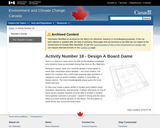
Students design a board game to teach their classmates about weather.
- Subject:
- Science
- Material Type:
- Activity/Lab
- Provider:
- Environment and Climate Change Canada
- Author:
- Environment and Climate Change Canada
- Date Added:
- 02/26/2019

Students design a board game to teach their classmates about weather.
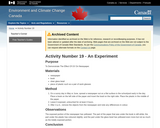
Students demonstrate the effect of UV on newspaper.

Students use a UV meter to monitor UV over a period of several hours and correlate it to atmospheric conditions. After collecting data, students will create a graph and also compare their data to the day's UV index forecast.

Students demonstrate the importance of reducing direct UV exposure and illustrate the degree of protection provided by various sources of shade.
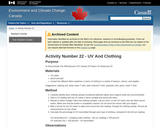
Students demonstrate the effectiveness of a variety of fabrics on reducing UV.
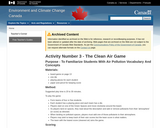
This board game familiarizes students with air pollution vocabulary and concepts.
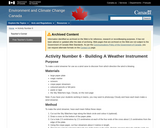
Students make a wind streamer for use as a wind vane to discover from which direction the wind is blowing.
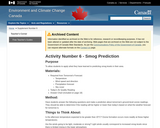
Students will relate weather conditions to ground level ozone and air quality conditions.

Students demonstrate the rate at which the sun's energy is absorbed is affected by the color of a material.
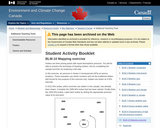
Students practice the technique of drawing isobars, first by completing a sample and then by analyzing a full map.
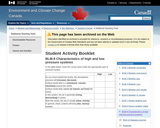
Students assess their understanding of pressure systems and the associated weather conditions that may result.

Students build an anemometer to measure wind speed.

Students build a barometer to show changes in air pressure.

Students build a thermometer and then compare its performance against a regular thermometer.

This resource describes air quality and how it can be affected by pollution and smog.

This resource describes ultraviolet radiation and its effects on the earth and human health.
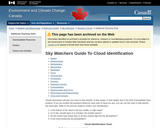
This resource describes and illustrates the major cloud types.
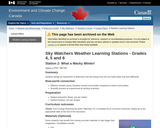
Students design an experiment to determine how the energy from the sun heats water and land differently.
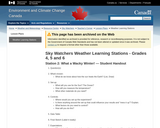
This handout is to be used with the activity "What a Wacky Winter!" In this activity students design an experiment to determine how the energy from the sun heats water and land differently.

These are the student instructions for the activity "What a Wacky Winter!" In this activity students design an experiment to determine how the energy from the sun heats water and land differently.